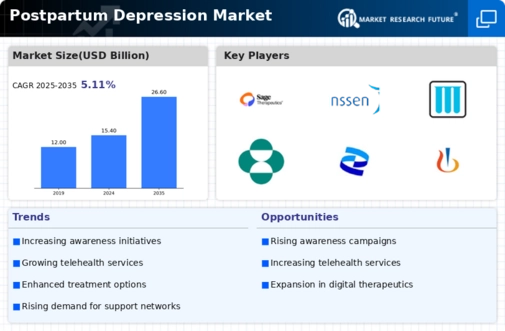Postpartum Depression Market Summary
The Global Postpartum Depression Market is projected to grow from 15.38 USD Billion in 2024 to 26.61 USD Billion by 2035.
Key Market Trends & Highlights
Postpartum Depression Key Trends and Highlights
- The market is expected to experience a compound annual growth rate (CAGR) of 5.11 percent from 2025 to 2034.
- By 2035, the market valuation is anticipated to reach 26.6 USD Billion, reflecting a substantial increase.
- in 2024, the market is valued at 15.38 USD Billion, indicating a strong foundation for future growth.
- Growing adoption of mental health awareness initiatives due to increased societal recognition of postpartum depression is a major market driver.
Market Size & Forecast
| 2024 Market Size | 15.38 (USD Billion) |
| 2035 Market Size | 26.61 (USD Billion) |
| CAGR (2025-2035) | 5.11% |
Major Players
Sage Therapeutics, Inc., Evotec SE, Teva, Janssen Pharmaceuticals, Sun Pharmaceutical Industries, Takeda Pharmaceutical Company, Mylan, Merck Co, GlaxoSmithKline, Roche Holding, Allergan, Pfizer, Sanofi Aventis, Novartis, Eli Lilly and Company, Reddys Laboratories, Cipla


















Leave a Comment